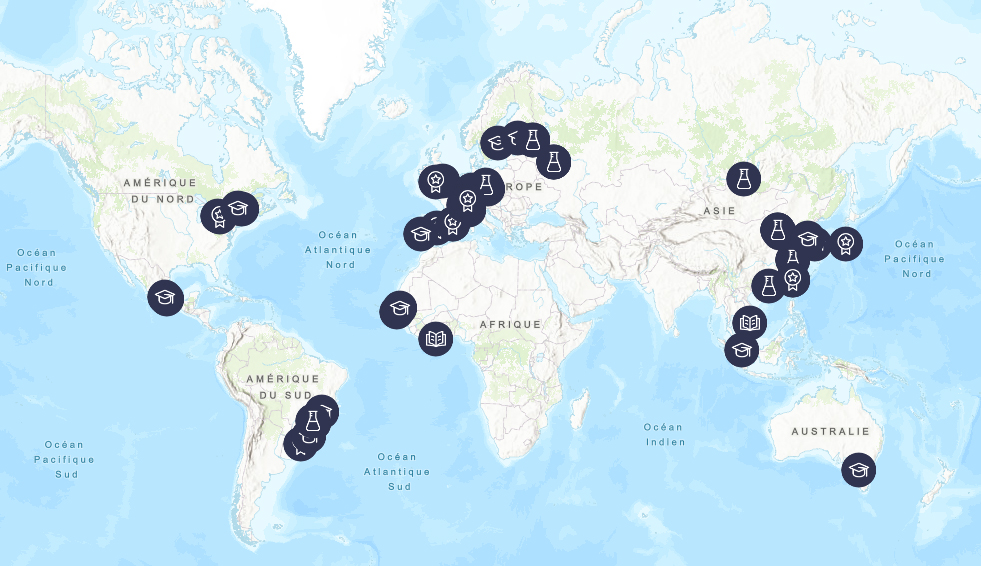International laboratories and networks
Université Grenoble Alpes (UGA) research teams and partners from research organizations are actively involved in numerous international laboratories and structuring research projects abroad, where they develop strategic scientific collaborations, and contribute to UGA's international visibility and attractiveness.

Locations of international research structures in which UGA and its institutions participate.
View the interactive map
View the interactive map
International research laboratories
International research laboratories (IRL), formerly International Joint Units (UMI) (previous CNRS nomenclature).IRLs are laboratories located on a single international platform, where partner institutions jointly conduct research activities within a shared scientific framework. These laboratories are structured around the significant and lasting presence of scientists from a limited number of French and foreign research institutions (only one foreign partner country).
List of laboratories:
| Nom | Description | Pays partenaires | Laboratoires UGA impliqués |
| LN2 | Laboratoire nanotechnologies et nanosystèmes | Canada | Laboratoire des technologies de la microélectronique |
| J-F AST | Japanese-french alliance for science and technology | Japon | Institut Néel Laboratoire des technologies de la microélectronique Laboratoire photonique électronique et ingénierie quantiques (PHELIQS) |
International research projects
International research projects (IRP), formerly called Laboratoires internationaux associés (LIA) (previous CNRS classification)..IRPs are virtual laboratories in which human and material resources are pooled for a research project, usually involving several research teams or laboratories in France and abroad that have already worked together on co-publications. Their purpose is to organize working meetings or seminars, develop joint research activities including field research, and supervise students.
List of projects:
| Nom | Description | Pays partenaires | Laboratoires UGA impliqués |
| CARE | Centre asiatique de recherche sur l'eau | Vietnam | Institut des géosciences de l’environnement (IGE) |
| BACWALL | Formation and structures of macromolecular complexes wich participate in the synthesis of the bacterial cell wall and virulence | Brésil | Institut de biologie structurale (IBS) |
| ECLAIRS2 | Études intégrées du climat et de l'océan en Afrique de l’ouest et réponses aux changements climatiques au Sénégal | Sénégal | Institut des géosciences de l’environnement (IGE) |
| FCPPL | France China particle physics laboratory | Chine | Laboratoire de physique subatomique & cosmologie (LPSC) - Jusqu'en 2019 |
| GEODESIC | Geometry driven signal and image processing lab | Australie | Grenoble images parole signal automatique (GIPSA-Lab) |
| GreKIT | Superconductivity from materials to device applications | Allemagne | Institut Néel Laboratoire de physique et modélisation des milieux condensés (LPMMC) Laboratoire national des champs magnétiques intenses (LNCMI) Laboratoire de génie électrique de Grenoble (G2ELab) |
| ICE ARCHIVE | Climates and environments from ice archives | Russie | Institut des géosciences de l’environnement (IGE) |
| JOULE | Joint underground laboratory in Europe | Russie République Tchèque |
Laboratoire souterrain de Modane (LSM) |
| LEPLB | Low energy particles low background | Russie | Laboratoire de physique subatomique & cosmologie (LPSC) |
| LIASTEP | Laboratoire sciences et technologies des plasmas | Canada | Laboratoire de physique subatomique & cosmologie (LPSC) Science et ingénierie des matériaux et procédés (SIMaP) |
| MAXWELL 2 | Laboratoire international associé francobrésilien James Clerk Maxwell | Brésil | Laboratoire de génie électrique de Grenoble (G2ELab) Institut de microélectronique, électromagnétisme et photonique - Laboratoire d'hyperfréquence et de caractérisation (IMEPLAHC). |
| NEXUS | Climat - eau - énergie - agriculture et services climatiques | Côte d'Ivoire | Institut des géosciences de l’environnement (IGE) |
| REZOC | Centre d'étude des ressources en eau et de la zone critique | Bénin | Institut des géosciences de l’environnement (IGE) |
| SFLFM | Sino french laboratory in fundamental mathematics | Chine | Institut Joseph Fourier (IF) |
| SPINMAT | Novel functional materials for spintronics | Allemagne | Spintronique et technologie des composants (SPINTEC) |
International research networks
International research networks (IRN), formerly called Groupements de recherche internationaux (GDRI) (former CNRS nomenclature).The purpose of this grouping is to structure an emerging scientific community at the international level around a shared theme or a research infrastructure. It brings together researchers from one or more French laboratories, including at least one CNRS laboratory, and from several partner laboratories abroad. These collaborations include the organization of workshops, seminars or schools in France and abroad. They define specific objectives in terms of expected outcomes, beyond the mere scientific animation, as well as the added value of the international collaboration. They have an exploratory purpose.
List of networks:
| Nom | Description | Pays partenaires | Laboratoires UGA impliqués |
| DRAKKAR | Assessing the benefit of high resolution ocean model configurations for Earth System models using NEMO | Royaume Uni | Institut des géosciences de l’environnement (IGE) Laboratoire des écoulements géophysiques et industriels (LEGI) |
| MAREES | New nanostructured materials and biomaterials for renwable electrical energy sources | Chine | Département de chimie moléculaire (DCM) |
| QUADMARTS | Quantitative detection of molecular and radical trace species produced by chemical reactions and photodissociation processe | États Unis | Laboratoire interdisciplinaire de physique (LiPhy) |
| SINERGIE | French singaporean network on renewable energies | Singapour | Laboratoire de génie électrique de Grenoble (G2ELab) Grenoble images parole signal automatique (GIPSA-Lab - SIMaP) Laboratoire des écoulements géophysiques et industriels (LEGI) |
Published on April 6, 2021
Updated on August 30, 2023
Updated on August 30, 2023

